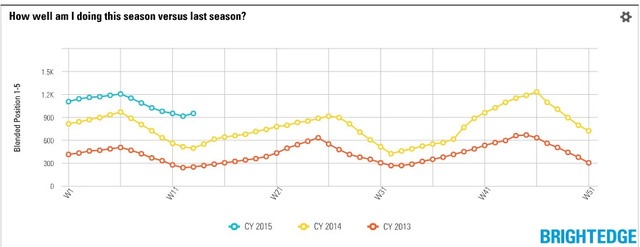Towards the end of April, numerous site owners began reporting a disruption in their traffic, leading many experienced in the industry to suspect an algorithm update. Since there was no official message about changes, the update was quickly termed the Phantom II update (the first being an update that occurred back in 2013). The update was later confirmed by Google in mid-May. The impacted sites included major brands, such as LinkedIn, which reported an estimated 15 percent drop after the roll out. Although the information from Google itself has been limited, marketers have been working to analyze the results of the changes to identify the targets of this update and what all site owners should know to avoid being penalized by the change.
What the Phantom II update sought to correct
When Phantom II’s impact was first noticed by site owners, many mistakenly believed it to be a Panda update. This was because both updates seemed to focus heavily on the quality of the content on the website. A few weeks after Phantom II was first noticed, Gary Illyes admitted that the update was a change in how the algorithm interprets quality signals. Google has also said that the update was going to be impacting individual pages and not entire domains. Here are a few key factors that industry professionals agree led to Phantom II penalties.
- Poor content
- Technical problems
- Design and appearance
1. Poor content. Poor content can create an awful user experience. The Phantom II update sought specifically to weed out thin and duplicate content. For example, many sites that contain large amounts of user generated content, which often includes a considerable amount of duplicate content, saw a large drop in rankings. That includes the popular site HubPages, that indicated that they had experienced a significant drop in traffic.
The attempts to weed out duplicate content also hurt major brands like LinkedIn, which often contains duplicate user generated content, such as on their company pages. Poor content can similarly include information that is difficult to digest or does not really address the point that the user is likely looking to answer. This thin content adds little value for the user and serves more as a placeholder than an attempt to engage and convert consumers.
2. Technical problems. Sites that are not functioning correctly, such as those with error message or those that do not properly load were also negatively impacted by the Phantom II update. These sites can hurt the user experience by making it difficult for people to find the information they seek. Considering that adding just one extra second of load time can decrease conversions by 7 percent, it is clear that customers do not appreciate sites that have been poorly constructed and exhibit latency.
3. Design and appearance. Websites that have not remained up-to-date on website advancements and continue to have designs that appear more spammy or less user friendly have also been hit by the update. The appearance and the ease of navigation impacts how well people can find and interact with content on the site. If you have fantastic content, but the site looks too spammy, then no one will be taking it seriously and they will not feel comfortable trusting you. Google recognized this problem and sought to correct it.
Protect websites from traffic losses or correct past damage
The key to weathering the phantom update is to focus on quality. We recommend rereading Google’s recommendations following the Panda update, which also focused on quality. In the post, Google reminds site owners to ask themselves questions, such as:
- Would you be comfortable giving your credit card information to this site?
- Does this article provide a complete or comprehensive description of the topic?
- Is this the sort of page you’d want to bookmark share with a friend or recommend?
These types of questions will provide you with guidance about how well a piece of content adheres to Google’s quality standards. We also recommend that you consider the following steps:
- Use traffic tracking platforms, like BrightEdge to look for any changes in traffic patterns around the end of April and beginning of May. If there has been a drop, this is likely due to the Phantom update and you need to examine your page and the content to see what might have caused the problem.

- Look carefully at your user signals across your site. Even if you have not been impacted by this Phantom II update, it is clear that Google has been placing an increased emphasis on content that is both valuable and relevant. You want to look at data, such as bounce rates, to determine the content that is resonating most with your readers and what is not having much of an impact. The content that is not achieving the desired result should be updated to Google’s quality standards.
- Work on increasing the depth of your content. Thin content has been the target of several updates, including this one. Work on creating material that does not just skim over a topic or state the obvious but actually dives deep into the material and offers insight and analysis. Make sure your content is worth reading. As you develop rich content, you will find that the ability to add in keywords increases naturally, so be sure to maximize this opportunity with tools like the BrightEdge Data Cube and track it with logic from Data Quant. Our Data Cube makes it easy for you to analyze demand, keywords, and what content your competitors are having success with.
- Watch your layouts and designs to make sure they are user friendly. Do not let your site become dominated by ads. Make sure that your design has been updated to be user- friendly and trustworthy and not spammy in appearance.
- If you have any errors in your site, such as 404 errors, get rid of them immediately. Correct any internal links that lead to pages that are now missing so that your site can be easily navigated.
The Phantom update from Google took many websites by surprise, impacting even major brands like HubPages. If you found yourself suddenly losing traffic as well, you were not imagining things. Rather than trying to rectify the situation by adjusting minor technical issues on your site, you need to focus on the big Content Performance Marketing picture and produce the high-quality, valuable content that Google and more importantly your users want to see.


